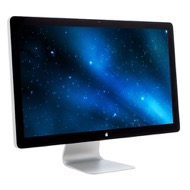


Last but not least there’s Thunderbolt, which is the video pros’ choice. Budget aside, given the choice between HDMI 2.1 and HDMI 2.0 we’d pick HDMI 2.1 – but if the choice was between HDMI 2.0 and DisplayPort 1.4, we’d pick DisplayPort: it has more bandwidth and is better for multiple displays. HDMI 2.1 is significantly better than HDMI 2.0, but it’s relatively new so tends to be found in the more expensive monitors. USB-C is brilliant for laptops provided it has sufficient power output and USB-C Alt Mode: a single cable connects everything including charging. That depends on what you have, what you want to do and what your budget is. HDMI, DisplayPort, Thunderbolt or USB-C: which is best for you? Our monitor puts out 90W, which is more than enough for our laptop, our USB hub and the various devices connected to it. If that matters to you, make sure the monitor is powerful enough: while the spec allows for power delivery at up to 100W, there is huge variety in the amount of power different manufacturers decide to provide – and if you have other things connected to your computer, how much power you need. That means we can connect our laptop to our monitor with a single cable and not just drive the display but recharge the battery at the same time. The other big advantage of USB-C is power delivery, or USB-PD for short. Alt Mode enables devices such as the M1 MacBook Air and Pro to have USB-C ports that are USB4/Thunderbolt 3/DisplayPort 1.4, although in the case of those Macs they only officially support one external display rather than multiple ones. And that’s because USB-C has been designed as a universal connector with an Alt Mode that enables it to carry non-USB technologies such as DisplayPort and Thunderbolt. We’re writing this on a 4K display connected to a laptop with no obvious HDMI or DisplayPort sockets, just two USB-C connectors.


 0 kommentar(er)
0 kommentar(er)
